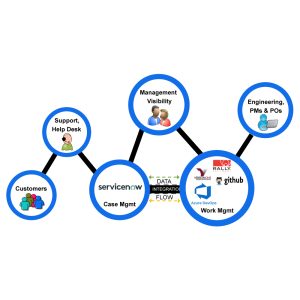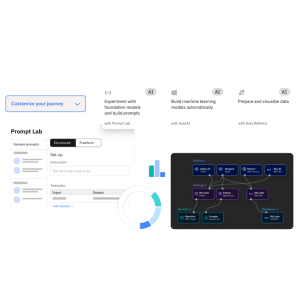Enterprises everywhere are racing against the clock to make their business operations more integrated, data-driven, and faster. Whether it is financial institutions faced with the need to navigate complex approvals or manufacturing plants revising their supply chains, there is a greater need for end-to-end business automation than ever before.
But the challenge is not just automating tasks; it is linking every process and system to work together. And that is where IBM Cloud Pak for Business Automation comes into play. CP4BA is a Red Hat OpenShift-based modular platform that unites AI, machine learning, process mining, robotic process automation (RPA), and decision management all in one space. It enables enterprises to automate smarter, not just faster, delivering true digital business operations.
Why Automation Needs a Unified Approach
Traditional business process automation efforts often have diminishing returns. Business units buy standalone workflow tools, bots, or analytics platforms to build siloed automation, neglect central governance, or lose central visibility. With time, and as the isolated systems evolve, they increase complexity, hinder scalability, or make it harder to see into the enterprise.
IBM Cloud Pak for Business Automation enables this integrated end-to-end automation for enterprises by combining:
- End-to-end process orchestration across applications and systems
- Centralized governance and insight into performance and compliance
- Deployment that scales to on-premises, cloud, or hybrid environments
With IBM’s unified approach, every specialized function, from HR for onboarding to servicing for customers, operates in a consistent governance system.
What Is IBM Cloud Pak for Business Automation?
IBM Cloud Pak for Business Automation is a modular suite of workflow automation solutions that enables organizations to digitize, optimize, and govern business operations. It combines key IBM technologies into a single, AI-powered platform:
| Core Capability | Description | Key Benefit |
| Workflow Automation | Designs, runs, and monitors digital workflows that connect systems, data, and people. | Streamlines approvals and task routing for faster cycle times. |
| Robotic Process Automation (RPA) | Automates repetitive, rule-based tasks using software bots. | Frees employees to focus on higher-value work. |
| Operational Decision Manager (ODM) | Automates complex decision logic using business rules. | Ensures consistency and compliance in real-time decisions. |
| FileNet Content Manager | Manages enterprise content, documents, and records with governance and compliance. | Enables secure, searchable, and compliant content handling. |
| Process Mining | Analyzes system logs to discover bottlenecks and improvement opportunities. | Provides data-driven process insights for continuous optimization. |
| Document Processing | Uses AI to extract, classify, and process unstructured documents. | Accelerates data entry and reduces manual errors. |
Together, these components provide an intelligent automation lifecycle to discover, decide, automate, and optimize — designed for continuous improvement.
Key Benefits for Enterprise Operations
IBM Cloud Pak for Business Automation enables users to achieve measurable business benefits in several industries by overcoming frequent operational obstacles. The primary benefits include:
- Boosted Efficiency and Productivity
Consolidating workflows and automating repetitive procedures enable businesses to carry out more work with less human effort by avoiding duplicates. Millions of documents that needed several hours to process can be accomplished in minutes using an AI-powered document capture function and RPA bots. - Improved Quality Decision-Making
Organizations can encode the rules and use them with built-in decision automation to allow them to make intelligent decisions in all systems. Every decision does not need to approve, transact, or suggest that can be assured of accuracy and regulation. - End-to-End Visibility
Process mining and analytics provide enterprises with full transparency and view into how work moves across duties. This transparency helps create strong governance, proper resource orientation, and strategic plan. - Scalability and Flexibility
CP4BA is hosted on Red Hat OpenShift, assisting several cloud, hybrid, and on-prem environments. This means companies can expand automation across global operations without a single source of truth. - Accelerated Innovation
Eliminate process friction and innovate by automatically organizing the right people and specifics at the right time rather than wasting internal resources searching.
How IBM Cloud Pak for Business Automation Simplifies Complex Operations
The beauty of IBM Cloud Pak for Business Automation is that it simplifies complexities. It eliminates various workflows, data silos, and decision subsystems and replaces them with a smart, interconnected network.
Some of the benefits include:
- Workflow Automation: Organizations can design and run complex workflows through simple UIs without the need for coding. After deployment, CP4BA enables real-time approvals, escalations, and integration with third-party solutions such as ERP or CRM systems.
- Robotic Process Automation: The platform’s RPA ability integrates with current workflows to have software bots carry out repetitive tasks such as data entry, reconciliation, and invoice processing, ensuring speed and consistency.
- Intelligent Document Processing: With AI-based document recognition, CP4BA extracts structured data from unstructured sources such as PDFs, emails, and forms to disrupt operational backlogs and reinvent customer turnaround time.
- Decision Automation and Governance: Using an ODM, CP4BA allows businesses to store all relevant business regulations in a dedicated database. This ensures all operational decisions rely on current laws, organizational procedures, and customer expectations.
- Process Mining for Continuous Improvement: This mining capability allows companies to analyze actual performance protocols, identify process inefficiencies, and then quantify the impact of automating repeated process parts to restart the consistency cycle.
Use Cases Across Industries
IBM Cloud Pak for Business Automation is designed to work across any enterprise. To illustrate, take a look at the following examples, which highlight the solution’s key areas of high impact in several industries.
- Financial Services: Organizations can speed up loan origination and lower credit risks, become regulatory compliant through decision management, and cut time in the approval process through document processing.
- Manufacturing: Companies can digitize processes in the supply chain to reduce production bottlenecks, automate QA and maintenance scheduling, and gain real-time insights through process analytics.
- Healthcare: Claims and patient record processing can be streamlined, compliance with healthcare regulations and data privacy ensured, and repetitive administrative tasks managed through RPA.
- Public Sector: Agencies can eliminate manual labor in citizen services with digital workflows, speed up approvals and policy decisions, and promote transparency and accountability across departments.
Measuring Business Impact
Customers who adopt IBM Cloud Pak for Business Automation find significant improvement in operational performance and customer experience that can be quantified as follows. The platform not only reduces manual effort but also facilitates a fundamental change in how work is governed, managed, measured, and optimized across the whole enterprise.
- 30–50% reduction in manual effort for vital operational processes through RPA and AI-driven document processing for repetitive and rule-based tasks.
- 25–40% improvement in cycle times through intelligent workflow orchestration and numerous improvements in process flow planning. Intelligent workflow improves process flow planning, eradicating process bottlenecks, and simplifying communication and cooperation across departments.
- Improved decision-making accuracy and compliance, decision automation ensures that business rules are followed in every situation. This translates to improved leadership and enforcement due to a 50% reduction in errors.
- Increased customer satisfaction, 20–50% decrease in response time, a 50% reduction in response error, and a 100% increase in service transparency results in 40–80% higher customer satisfaction.
Conclusion: Partnering with Nexright for Intelligent Automation Success
Nexright – Your Partner for Intelligent Automation Success. Simplifying business operations doesn’t end with deploying tools. It’s all about creating an integrated automation ecosystem that grows with your business. IBM Cloud Pak for Business Automation software provides this foundation by integrating AI, workflows, decisions, and content — truly demonstrating how IBM Cloud Pak simplifies business processes.
Nexright collaborates with enterprises to maximize the power of IBM Cloud Pak for Business Automation throughout assessment, strategy, implementation, and ongoing enhancement stages. Nexright brings strong collaboration skills to cloud automation and business process automation, enabling scalable, secure, and measurable business results.




